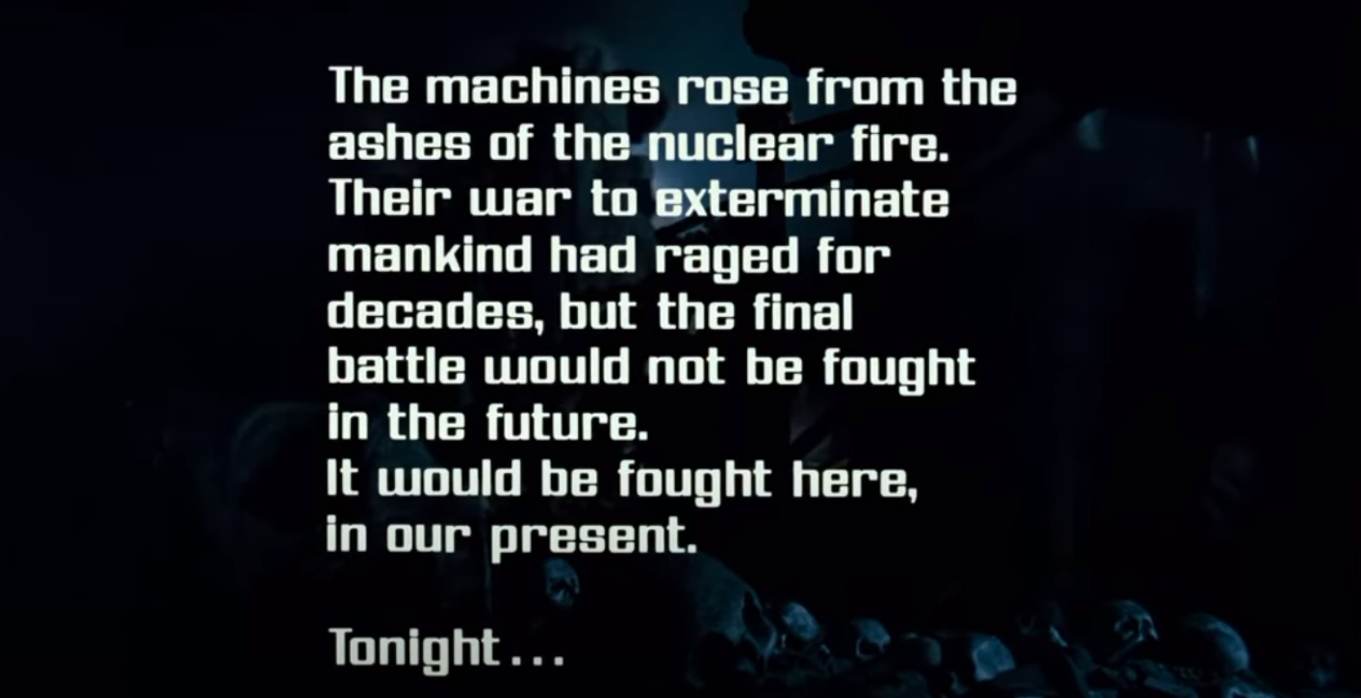The Philosophy of Transhumanism: From Literature to Scientific Practice
Anyone interested in technological progress and cybernetic transplants knows that transhumanism is no longer a "fringe science", but research that is surprisingly concrete.

“The machines emerged from the ashes of the nuclear fire. Their war to exterminate humankind had raged for years and years. But the final battle would not be fought in the future: it would be fought here, in our present. Today.”[Terminator, 1984]

Anyone interested in technological progress and cybernetic transplants knows that transhumanism is no longer a "fringe science" or pseudo-science, but a research that is surprisingly concrete. There are dozens of studies, essays, books, conferences, meetings and debates on the subject; operating platforms are opening and closing, as well as hyper-funded start-ups for the development of projects related to the Philosophy of Transhumanism.
Human cryopreservation business
There are corporations that are already involved in the transhuman business. In Italy, for example, there is Filippo Polistena, owner of a funeral parlor in Mirandola, who has been offering human cryopreservation since 2012, thanks to a partnership with the Russian company KrioRus, which carries out cryogenesis practices and preserves hibernated bodies (or organs): "The basic service is about $36,000. The basic price means payment for the treatment, not including transportation and other preparatory steps if the body is not near the Russian company. Everything that happens before (and is not included in the contract) must be paid separately" (A. Scaglioni, Human hibernation: it costs $36 thousand to hope for awakening after death, Corriere della Sera, November 24, 2019).

Alcor Human Cryopreservation Protocol
From Cryonics Third Quarter 2010, updated February 2019
Contents:
Objectives
Non-Ideal Cases
Summary of Cryonics Procedures
Stabilization
Cardiopulmonary Support
Induction of Hypothermia
Administration of Medications
Remote Blood Substitution
Patient Transport
Monitoring of Stabilization Procedures
Cryoprotective Perfusion
Cryoprotectant Perfusion Monitoring
Cryogenic Cooldown
Long Term Care
Debriefing and Case Reports
This protocol is an ideal that Alcor seeks to achieve, but that in many cases will not be possible. Obstacles preventing ideal procedures include insufficient notice of impending legal death, location of death, logistics and deployment problems, and financial constraints which are explained in more detail in the policy on Comprehensive Member Standby (CMS) on the Alcor website.
Frozen
In 2016 there were already reports of 377 people being "frozen" around the world by the three companies involved, like Alcor (US), and KrioRus (Russia). That's how KrioRus explains the process to potential clients: "Cryonics is the only chance for a dying person to prolong his life. For this, after all the special procedures (perfusion and vitrification), the person must be placed in an environment with very low temperatures, where chemical reactions are stopped. The first cryo-patient, the American professor James Bedford, has been preserved for 50 years without any changes in his condition", obviously to ensure an awakening it will be necessary to resort to a technology that does not seem to exist at this time, but one must hope for something: "Cryogenic procedures carried out properly and safe preservation leave hope that in the future, with the help of new technologies, it will be possible to renew brain and body cells or to replace them with healthy cells".
Transhumanists of multiple varieties share the view that we can make radical changes to the human condition. Major scientific and technological progress is both possible and desirable. Beyond that, consensus immediately dissolves, with differences over the expected rate, shape, and risks of progress. Those who expect a technological singularity anticipate a drastic acceleration in the rate of change, either as a one-time jump caused by the advent of superintelligence, or as a continuous acceleration driven by exponential trends in computing power. Others expect technology to advance at different rates in various sectors and to go through faster and slower periods, depending not only on technologies themselves but on economic and social conditions. [Here]

Movie predictions and literary studies
There is a lot of predictive literature, TV series, movies, about the preservation of the body from death. How can we fail to recall the cryogenic bodies in Alien (1979), Ridley Scott's masterpiece, or the animated TV series Futurama, (on Fox from 1999 to 2003), created by Matt Groening ("father" of The Simpsons) and produced by David X, in which Philip J. Fry, a pizza delivery boy, accidentally ends up in a cryogenic sleep capsule in 2000 and wakes up in 2999 to begin a new life in a hyper-futuristic New York. Death avoidance, like body enhancement, is an important element of transhuman philosophy. The quest for eternal life is itself a classical topos, a companion of human philosophical reflection since time immemorial. Epic of Gilgamesh (second millennium B.C.) and The Picture of Dorian Gray (1890) are imbued with it, despite being such distant genres and historical moments, and have experienced its desire - Gnostic, esoteric, occult, etc. - Julius Evola, Joseph Needham, Renè Guénon, Rudolf Steiner, Gustav Meyrink, Titus Burckhardt, Mircea Eliade: writers, alchemists, theosophists, philosophers, anthropologists.
Human Longevity
Transhumanism today is not (at least not officially) about "eternal life," but rather about "human longevity," a term first coined in the 1990s by the biologist Craig Venter, who initiated the "genomic gold rush". Human longevity projects revolve around the desire to slow human aging, largely through information gleaned from genomic experiments. Everything around DNA, in any field, is somehow related to this: Banish death and achieving eternal life. Just for a few of us, of course, because the costs are so high and few can really handle them. There is nothing strange in wanting to make life longer, less painful and qualitatively more pleasant (let's talk about the health point of view), but to go so far as to manipulate DNA and formulate hypotheses for reducing the current population (the idea launched by some green activists of a voluntary - for the time being - climatic vasectomy to avoid giving birth to children guilty of emitting too much CO2 is recent) in order to preserve and prolong the lives of some, who are therefore considered better than others, goes beyond the declared good intentions. Clearly, the desire to transcend the limits of death goes beyond ethics and sometimes even becomes political activism.
Original article: Filosofie transumane
Bibliography
- Bacon, F. (1620) Novum Organum. Translated by R. L. Ellis and J. Spedding. Robertson, J. ed, The Philosophical Works of Francis Bacon, 1905. London: Routledge.
- Bainbridge, W.S. (2005) “The Transhuman Heresy.” Journal of Evolution and Technology, Vol. 14 Issue 2, pp. 1-10, August.
- Bartley, W. W. (1984) The Retreat to Commitment. Open Court.
- Bell, T. W. and Murashige, K. H. (1999) “Who Owns Your Genes?” EXTRO-4: Biotech Futures Conference, Berkeley California.
- Bostrom, N. (1998) “How Long Before Superintelligence?” International Journal of Futures Studies 2.
- “Are You Living in a Computer Simulation?” Philosophical Quarterly (2003) Vol. 53, No. 211, pp. 243-255.
- “A History of Transhumanist Thought”, Journal of Evolution and Technology (2005) Vol. 14, April.
- Churchland, P.M. (1992) A Neurocomputational Perspective: The Nature of Mind and the Structure of Science. Cambridge, MA: MIT Press.
- Condorcet, J.-A.-N. d. C. (1979) Sketch for a Historical Picture of the Progress of the Human Mind. Westport, Conn.: Greenwood Press.
- Drexler, K. E. (1985) Engines of Creation: The Coming Era of Nanotechnology. London: Forth Estate.
- Ettinger, R. (1964) The Prospect of Immortality. New York: Doubleday.
- Man Into Superman. New York: St. Martin’s Press. (1972)
- Extropy Institute (2005) “History and Achievements of ExI from 1988—2005.” http://www.extropy.org/history.htm. Accessed January 15, 2012.
- FM-2030 (1989) Are You a Transhuman? New York, NY: Warner Books.
- Glover, J. (1984) What Sort of People Should There Be? Pelican.
- Hansell, G. R. and Grassie, W. (2011) Transhumanism and Its Critics. Bloomington, IN: Xlibris Corporation.
- Hughes, J. (2012) “Transhumanism and Personal Identity,” in M. More and N. Vita-More The Transhumanist Reader. Hoboken: Wiley-Blackwell.
- Huxley, J. (1957) New Bottles for New Wine, (1957). London: Chatto & Windus.
- Jones, R. (1995) “A History of Extropic Thought: Parallel Conceptual Development of Technicism and Humanism”, EXTRO-2 Proceedings, Extropy Institute.
- Koene, R. A. (2012) “Uploading to Substrate-Independent Minds,” in M. More and N. Vita-More The Transhumanist Reader. Hoboken: Wiley-Blackwell.
- Kurzweil, R. (1990) The Age of Intelligent Machines. MIT Press.
- The Age of Spiritual Machines: When computers exceed human intelligence. New York: Viking. (1999)
- Merkle, R. (2012) “Uploading,” in M. More and N. Vita-More The Transhumanist Reader. Hoboken: Wiley-Blackwell.
- Minsky, M. (1994) “Will Robots Inherit the Earth?” Scientific American, October.
- Moravec, H. (1989) Mind Children. Harvard: Harvard University Press.
- Robot: Mere Machine to Transcendent Mind. New York: Oxford University Press. (1999)
- More, M. (2010) “The Overhuman in the Transhuman.” Journal of Evolution and Technology. Vol. 21 Issue 1, January.
- “True Transhumanism.” In Transhumanism and Its Critics. (2010)
- “Hyperagency and Hope: Critiquing Human Limitationism.” Metanexus Institute, July 19. (2009)vimeo.com/9860229
- “The Proactionary Principle.” May 2004. <http://www.maxmore.com/proactionary.htm>, <http://www.extropy.org/proactionaryprinciple.htm>
- Principles of Extropy, Version 3.11 2003. http://www.extropy.org/principles.htm. Original version: “The Extropian Principles.” In Extropy #5.5, May 1990.
- “Mind Morph: Technologically Refined Emotion and Personality.” EXTRO-3 Proceedings, Extropy Institute. (1997)
- The Diachronic Self: Identity, Continuity, Transformation. Ann Arbor, MI: A Bell & Howell Company. (1995)
- “Pancritical Rationalism: An Extropic Metacontext for Memetic Progress.” EXTRO-1 Proceedings, Extropy Institute. (1994)
- “Technological Self-Transformation: Expanding Personal Extropy.” Extropy #10 (Winter/Spring 1993), vol.4, no.2, pp.15-24. (1993)
- “Transhumanism: Toward a Futurist Philosophy”, Extropy #6, Summer. (1990) Revised June 1994 and 1996.
- Nietzsche, F. W. (1896) Thus Spake Zarathustra, translated by Alexander Tille, Macmillan, New York and London.
- Nozick, R. (1974) Anarchy, State, and Utopia. Basic Books.
- Parfit, D. (1984) Reasons and Persons. Oxford: Clarendon Press.
- Pico della Mirandola, G. (1956), Oration On the Dignity of Man. Chicago: Gateway Editions.
- Rand, A. (1979) Introduction to Objectivist Epistemology. Mentor.
- Sandberg, A. (2001) “Morphological Freedom – Why We not just Want it, but Need it.” http://www.nada.kth.se/~asa/Texts/MorphologicalFreedom.htm Retrieved 2011-11-21.
- “Amplifying Cognition: Extending Human Memory and Intelligence” EXTRO-3 Proceedings, Extropy Institute. (1997)
- Sandel, M. (2004) “The Case Against Perfection.” The Atlantic, April.
- Stambler, Ilia (2010) “Life Extension: A Conservative Enterprise? Some Fin-de-Siecle and Early Twentieth-Century Precursors of Transhumanism.” Journal of Evolution and Technology, Vol. 21 Issue 1: 13-26, March.
- Stock, G. (2002) Redesigning Humans: Our Inevitable Genetic Future. Houghton Mifflin Company.
- Ulam, S. (1958) “John von Neumann 1903-1957”, Bulletin of the American Mathematical Society (May).
- Various (2002) “The Transhumanist Declaration.” http://transhumanism.org/index.php/WTA/declaration/.
- Various (2003) The Transhumanist FAQ: v 2.1. World Transhumanist Association 2003. http://transhumanism.org/index.php/WTA/faq/.
- Verdoux, P. (2009) “Transhumanism, Progress and the Future.” Journal of Evolution and Technology, Vol. 20 Issue 2, December.
- Vinge, V. (1993) “The Coming Technological Singularity”, Whole Earth Review Winter issue.
- Vita-More, N (1983) “Transhuman Manifesto.” https://humanityplus.org/manifesto.htm
- “Transhumanist Manifesto” (1998), Transhumanist Arts Statement (2002)
